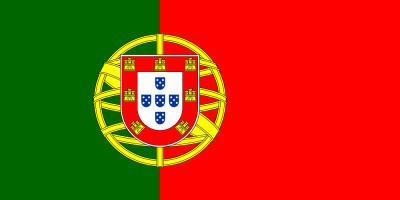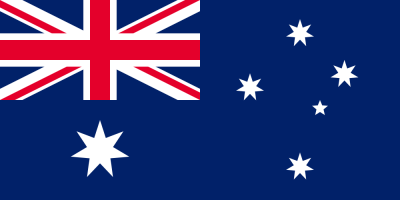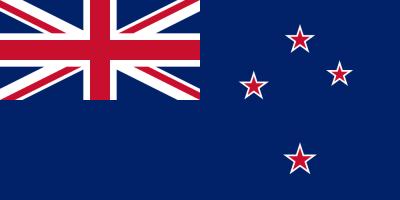Tuvalu flag color codes features a light blue field with nine yellow stars representing the country’s nine islands. Reproducing the calming tones of this Pacific flag correctly necessitates using the precise Tuvalu flag color codes. This article provides the specific color values for the Tuvalu flag in HTML HEX, RGB, PANTONE, HSL, CMYK, HWB and NCOL formats. With the accurate blue and yellow Tuvalu flag color codes, graphic designers, artists and anyone needing to portray this small island country’s national colors can do so faithfully. Refer below for the exact official blue and yellow hues used on the Tuvalu flag.
Table of Contents
What are the colors of Tuvalu flag?
The Tuvalu flag consists of five colors:
- Light Blue – The main background field of the flag is light blue in color. This pale blue covers the majority of the flag.
- Yellow – There are nine yellow five-pointed stars arranged across the light blue field. The stars represent Tuvalu’s nine islands.
- Red – A red horizontal stripe is at the top of the flag.
- White – A narrow white stripe separates the red stripe from the main light blue field.
- Dark Blue – A dark blue rectangle is on the left side of the flag extending from the top to the bottom.
The combination of light blue and yellow makes for a bright and cheerful flag representing this tiny Polynesian island nation.
Tuvalu flag color codes & Color Names:
Light Blue:
| Color Model | Value |
|---|---|
| HTML HEX | #3E4095 |
| RGB | RGB(62, 64, 149) |
| PANTONE | PANTONE 2727 C |
| HSL | HSL(238, 41%, 41%) |
| CMYK | CMYK(58%, 57%, 0%, 42%) |
| HWB | HWB(238, 0%, 42%) |
| NCOL | Not applicable |
Yellow:
| Color Model | Value |
|---|---|
| HTML HEX | #FFD100 |
| RGB | RGB(255, 209, 0) |
| PANTONE | PANTONE Yellow C |
| HSL | HSL(45, 100%, 50%) |
| CMYK | CMYK(0%, 18%, 100%, 0%) |
| HWB | HWB(45, 0%, 0%) |
| NCOL | Not applicable |
White:
| Color Model | Value |
|---|---|
| HTML HEX | #FFFFFF |
| RGB | RGB(255, 255, 255) |
| PANTONE | Pantone White |
| HSL | HSL(0, 0%, 100%) |
| CMYK | CMYK(0%, 0%, 0%, 0%) |
| HWB | HWB(0, 100%, 0%) |
| NCOL | Not applicable |
Dark Blue:
| Color Model | Value |
|---|---|
| HTML HEX | #001E62 |
| RGB | RGB(0, 30, 98) |
| PANTONE | PANTONE 287 C |
| HSL | HSL(221, 100%, 19%) |
| CMYK | CMYK(100%, 70%, 0%, 62%) |
| HWB | HWB(221, 0%, 62%) |
| NCOL | Not applicable |
Red:
| Color Model | Value |
|---|---|
| HTML HEX | #E70010 |
| RGB | RGB(231, 0, 16) |
| PANTONE | PANTONE 186 C |
| HSL | HSL(355, 100%, 45%) |
| CMYK | CMYK(0%, 100%, 93%, 9%) |
| HWB | HWB(355, 9%, 9%) |
| NCOL | Not applicable |
What is the meaning of colors in the Tuvalu flag?
The flag of Tuvalu consists of five main colors, each with its own symbolic significance. Here is the meaning of each color in the Tuvalu flag:
- Light Blue: The light blue color represents the Pacific Ocean, highlighting Tuvalu’s geographical location as a group of islands in the Pacific. The ocean is central to the identity and livelihood of the Tuvaluan people.
- Yellow: The yellow color symbolizes the warm and cheerful nature of the Tuvaluan people. It represents the bright and sunny weather in the region.
- White: The white color represents the purity of the aspirations of the Tuvaluan people for a prosperous and harmonious future. It symbolizes peace and unity.
- Dark Blue: The dark blue color represents the vastness of the Pacific Ocean and the deep blue sky. It signifies the strength and determination of the Tuvaluan people.
- Dark Red: The dark red color represents the Tuvaluan people’s courage and their determination to persevere in the face of challenges. It also symbolizes Tuvalu’s history and the blood shed by ancestors in defense of their land.
The combination of these colors in the Tuvalu flag reflects the nation’s connection to the Pacific Ocean, its cultural identity, and the values important to its people. The flag’s design was adopted upon gaining independence from British colonial rule on October 1, 1978, and it was designed by Vione Nation, a Tuvaluan artist.
Explore More Flag Colors:
- Togo Flag Color Codes
- Central African Republic Flag Color Codes
- Turkmenistan Flag Color Codes
- Vanuatu Flag Color Codes
FAQs: Frequently Asked Questions:
Why is Tuvalu not visited?
Tuvalu, a small island nation in the Pacific, is not as frequently visited by tourists compared to some other destinations, and several factors contribute to this:
Remote Location:
Tuvalu is one of the world’s most remote countries, located in the central Pacific Ocean. Its isolation makes it less accessible for travelers, and getting there involves long flights with limited direct options.
Limited Tourism Infrastructure:
Tuvalu has a limited tourism infrastructure compared to more popular tourist destinations. The country is made up of small atolls, and the availability of accommodations, transportation, and tourist facilities may be limited.
Small Size:
Tuvalu is one of the world’s smallest nations, both in terms of land area and population. The limited size means fewer attractions and activities compared to larger destinations.
Is Tuvalu a high income country?
Tuvalu is not classified as a high-income country. As of my last knowledge update in January 2022, Tuvalu is categorized as a lower-middle-income country. The World Bank classifies countries into different income groups based on their Gross National Income (GNI) per capita. The income groups include low-income, lower-middle-income, upper-middle-income, and high-income.
Tuvalu is a small island nation located in the Pacific Ocean, and its economy is heavily dependent on external aid, remittances, and a few key sectors such as fishing and the sale of fishing licenses. The country faces economic challenges, including limited natural resources, vulnerability to climate change and sea-level rise, and a small domestic market.
What is Tuvalu known for?
Tuvalu, a small island nation in the Pacific Ocean, is known for several distinctive features and characteristics:
Geographical Location:
Tuvalu is one of the world’s smallest and most remote countries. Comprising nine atolls and reef islands, Tuvalu is situated in the central Pacific, making it a unique and geographically isolated destination.
Vulnerability to Climate Change:
Tuvalu gained international attention due to its vulnerability to climate change and rising sea levels. The country has been a vocal advocate for global action to address climate change and its impact on low-lying island nations.
Coral Reefs and Marine Life:
The waters surrounding Tuvalu are known for their pristine coral reefs and diverse marine life. The underwater ecosystems attract snorkelers and divers interested in exploring the vibrant marine biodiversity.
What religion is Tuvalu?
Christianity is the predominant religion in Tuvalu. The majority of the Tuvaluan population adheres to Protestant Christianity, with the Church of Tuvalu (EKT – Ekalesia Kelisiano Tuvalu) being the largest Christian denomination in the country. The Church of Tuvalu is a Reformed Protestant church that has played a significant role in Tuvaluan society and culture.
In addition to Protestantism, there is also a minority Catholic community in Tuvalu. The Catholic Church has a presence in the country, and Catholicism is practiced by a smaller percentage of the population.
Is it safe to go to Tuvalu?
Tuvalu is generally considered a safe destination for travelers. The country has a low crime rate, and violent crime is rare. Tuvaluans are known for their hospitality, and visitors often feel welcomed in the local communities.
However, as with any travel destination, it’s important for travelers to be aware of certain considerations:
Health Precautions:
Ensure that routine vaccinations are up-to-date before traveling to Tuvalu. Additionally, travelers may need vaccinations specific to the region and should check with healthcare professionals for recommendations.
Environmental Challenges:
Tuvalu is vulnerable to environmental challenges, including the impact of climate change, rising sea levels, and tropical storms. Travelers should be aware of weather conditions and any potential environmental hazards.
Limited Infrastructure:
Tuvalu has limited tourism infrastructure compared to more developed destinations. Travelers should be prepared for a more remote and basic travel experience.
Cultural Sensitivity:
Respect for local customs and traditions is important. Tuvalu has a unique cultural identity, and visitors should be mindful of cultural sensitivities, especially in more traditional communities.
How does Tuvalu get money?
Tuvalu’s economy is heavily dependent on external aid, remittances, and a few key economic sectors. Here are some of the primary sources of income for Tuvalu:
Remittances:
Tuvalu receives a significant portion of its income from remittances sent by Tuvaluans living abroad. Many Tuvaluans work overseas, particularly in countries like New Zealand and Australia, and send money back to their families.
Fishing Industry:
Tuvalu’s economy benefits from revenue generated by the fishing industry. The country sells fishing licenses to foreign vessels, allowing them to fish in Tuvalu’s exclusive economic zone (EEZ). This is a crucial source of income for the government.
International Aid:
Tuvalu receives financial assistance and aid from various international organizations, including development agencies and donor countries. This aid is often directed toward projects related to infrastructure, climate change adaptation, and social development.
Is there poverty in Tuvalu?
Tuvalu is classified as a lower-middle-income country, and it has a relatively small population. While the country faces economic challenges and relies on external aid and remittances, it does not typically fall into the category of countries with widespread extreme poverty.
However, it’s important to note that economic conditions can vary within the country, and there may be pockets of poverty or economic vulnerability, especially in rural and more isolated areas. The limited size of the country, its dependence on external factors such as fishing licenses and foreign aid, and the impact of environmental challenges like rising sea levels can influence the overall economic well-being of the population.
Does Tuvalu have an airport?
Yes, Tuvalu has an airport. The main international airport in Tuvalu is Funafuti International Airport (IATA code: FUN). Funafuti is the capital of Tuvalu, and the airport serves as the primary gateway for air travel to and from the country.
Funafuti International Airport is located on Funafuti Atoll, and it has facilities for both domestic and international flights. While Tuvalu is a small and remote country, the airport is an essential transportation hub, connecting Tuvalu to other countries in the Pacific region.
Is Tuvalu a small country?
Yes, Tuvalu is a small country. It is one of the world’s smallest and least populous nations. Tuvalu is a Polynesian island country located in the central Pacific Ocean, consisting of nine atolls and reef islands. The total land area of Tuvalu is relatively small, and it is spread across a vast expanse of ocean.
The islands of Tuvalu are scattered over approximately 26 square kilometers (about 10 square miles) of land. Due to its small size, Tuvalu faces various challenges, including limited natural resources, vulnerability to environmental changes such as rising sea levels, and a small domestic market.
Is Tuvalu a friendly country?
Yes, Tuvalu is known for being a friendly and welcoming country. Tuvaluans are generally warm and hospitable, and visitors often describe the local population as friendly and open. The cultural traditions of Tuvalu place a strong emphasis on community and social ties, contributing to a sense of friendliness and mutual respect.
Tourists who visit Tuvalu often appreciate the genuine friendliness of the people and the opportunity to experience the local way of life. The cultural richness of Tuvalu, including traditional music, dance, and crafts, is often













